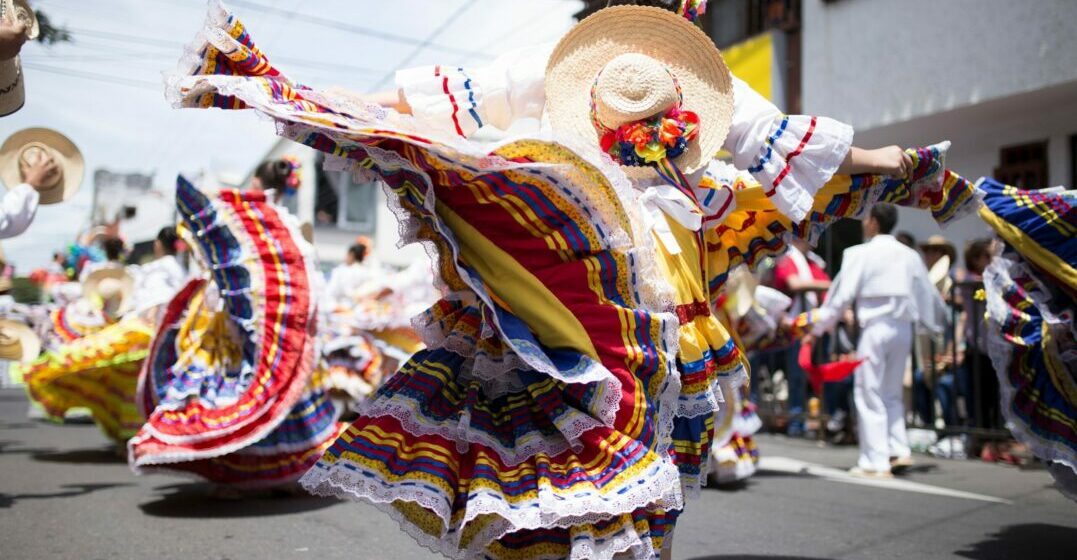What languages are spoken in Colombia?
Published on June 22, 2022 / Updated on January 5, 2024
Colombia’s main language is Spanish. It is spoken by more than 99% of the population. If you are thinking of learning Spanish, many people say Colombians speak the clearest Spanish. Listen to Shakira speaking Spanish and decide for yourself! Once you start traveling around Colombia and improve your listening skills, you will learn that there are many different accents and languages.
In this article, we will learn about the languages spoken in Colombia and some differences between the Spanish that is spoken in Colombia and Spanish spoken in Spain.
What is the official language of Colombia, you ask? Spanish! But wait, English is the official language on the Colombian islands San Andres, Providencia and Santa Catalina. While Spanish is Colombia’s main language, spoken by 99.5% of the population, there are Amerindian (indigenous languages), Creole, and Romani speakers as well.
The Spanish first arrived in what is now known as Colombia in 1499. They eventually colonized parts of the region as the New Kingdom of Granada. Modern day Colombia has been inhabited by indigenous people for centuries, but the colonization of the region by Spain led to Spanish being the most commonly spoken language.
Yes, Colombia was colonized by Spain, but Colombian Spanish and Spanish from Spain have their differences. Additionally, throughout Colombia the Spanish dialect changes if you are in the capital Bogotá, the Caribbean, the Pacific coast, the city of Medellín, and more.
Spanish spoken in Colombia is characterized by a musical intonation and clear pronunciation. For this reason, many people believe Colombia is a good place to learn Spanish. One main difference between the Spanish in Spain and in Colombia is the use of the tú (you, informal), usted (you, formal), vosotros (you plural, informal) forms.
In Spain, the usted form is used to show respect when speaking to someone you do not know, someone who is older than you, or someone you need to show respect to such as your boss or your doctor. The vosotros form is used to address a group of people you know. It is informal. In Colombia, it is common to use vos (you, singular, informal) between friends. While tú is more intimate and used between couples.
Also, in Colombia, usted is not always formal. The formality of a situation usually dictates which form of “you” to use, but in Colombia it can vary from region to region. Let’s review a few differences in common expressions in Colombia and Spain:
| Spain | Colombia | English |
| ¿Cómo estás? | ¿Qué más? | How are you? |
| ¡Lo siento! | ¡Qué pena! | I’m sorry! |
| Amigo / Amiga | Parce / parcero / parcera | Friend |
| Fiesta / Fiestear | Rumbo / Rumbear | Party / to party |
| Guay | Chévere | Cool |
Listen to YouTuber Karol G explain some more Colombian slang words.
Spanish speakers often use the diminutive of a word. For example, changing gato (cat) to gatito (little cat). In Colombia, it is common to use the ending -ico or -ica when the word ends in –to or -ta. So, gato becomes gatico.
While Spanish may be Colombia’s national language, it’s important to recognize the various Colombian languages and different Spanish dialects. People disagree on the number of languages, other than Spanish, that are spoken in Colombia. The 2005 Colombian census counts 37 major languages. One organization has documented 101 languages in Colombia! In Colombia there are 65 minor Amerindian, or indigenous, languages. These languages are grouped into 12 different language families.
Two Creole languages are also spoken in Colombia. The first, San Andrés Creole, has some similarities to other Creole languages found in the Caribbean islands. Over time English, Spanish and other languages mixed to create a completely new language.
The second Creole language, known as Palenquero, developed from people brought to the region to be enslaved during Spanish colonization. These enslaved people created walled communities known as palenques and developed their own language. This language is spoken in the city of San Basilio de Palenque.
We may never know the exact number of languages spoken in Colombia. The language diversity of Colombia is part of its rich history. If you are looking to learn Spanish alongside some indigenous languages, Colombia might be the place for you. Who knows, you just might meet a parce (friend) while learning Colombian Spanish.
